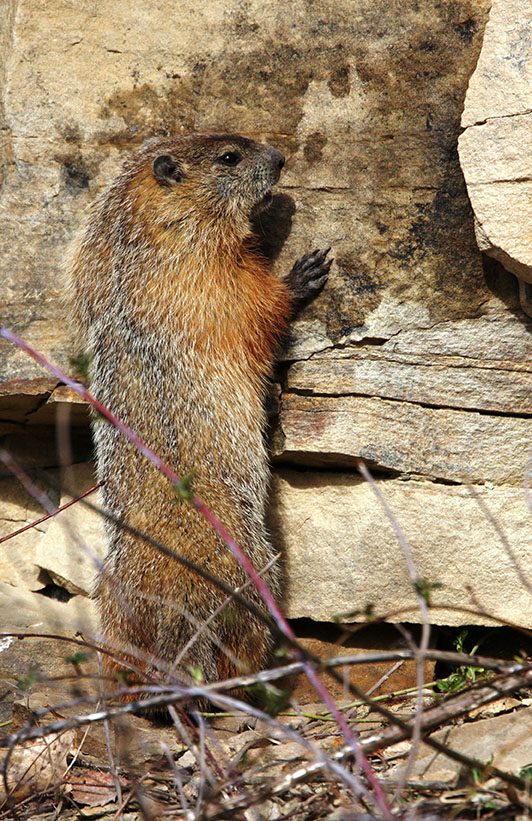Groundhogs go by many names including chuck, woodchuck, marmot, monax, and whistle pig. They are a common Pennsylvania game animal. Groundhogs are part of the squirrel family and are closely related to chipmunks and squirrels. In the summer, they are mainly active in the early morning and late evening. In the winter, they hibernate.
| Appearance | Groundhogs have fur that ranges from a yellowish-brown to a blackish brown. The fur along their bellies is lighter than that on their backs. |
| Length | About 20 to 26 inches long including a 6 inch tail |
| Weight | Anywhere from 5 to 10 pounds |
| Habitat | Groundhogs prefer open areas like fields, meadows, pastures, farmland, overgrown cemeteries, and orchards. |
| Food | Alfalfa, clover, dandelion greens, grasses, weed shoots, and garden plants like apples, beans, carrots, peas, and pears |
| Predators | Dogs, coyotes, foxes, bobcats, hawks, and owls |
| Location in Pennsylvania | Statewide |
| Extra facts | Groundhogs have good senses of sight, hearing and smell. A groundhog usually has 2-3 holes in its burrow. The hole with the pile of dirt around the entrance is the main entrance. Tunnels and burrows made by groundhogs are often used by skunks, raccoons, and foxes. |

Complaints
Groundhogs love to eat vegetables and flowers in the garden. They will also eat many types of crops including corn, soybeans, apples, and other fruit. They will dig under building foundations and weaken them. They can carry and transmit rabies and fleas.
Solutions
Groundhogs can be trapped with foothold traps and cage-style traps. They can be shot with firearms. Installing wire mesh at least 6 inches below the ground along building foundations will help alleviate problems. Fencing around flowers and vegetables that goes at least 6 inches below ground is recommended.
For more information about groundhogs, check out the Pennsylvania Game Commission’s wildlife notes.
Special note concerning rabies vector (carrier) species. Rabies is a contagious, potentially fatal disease transmitted from one infected animal to another through a bite or scratch. Humans are susceptible to rabies and prompt medical attention is necessary. With this in mind, all rabies vector species trapped or removed by wildlife professionals must be humanely dispatched rather than relocated. Pennsylvania rabies vector species include skunks, raccoons, foxes, groundhogs, bats and coyotes.
